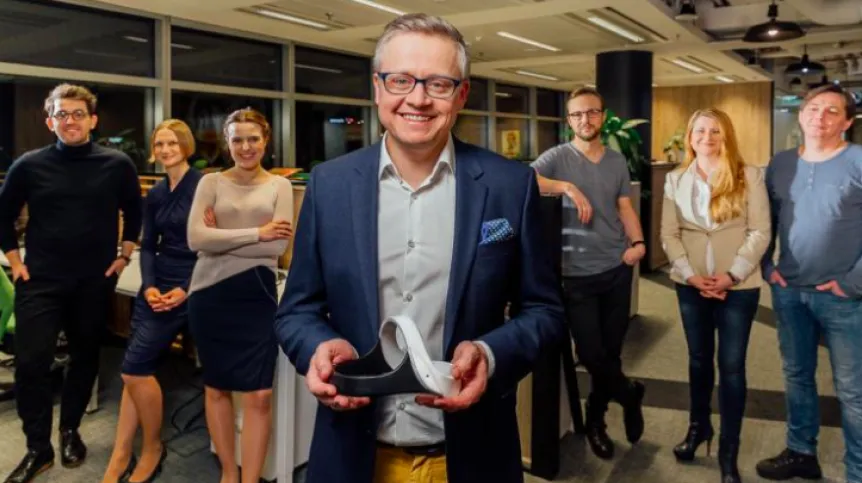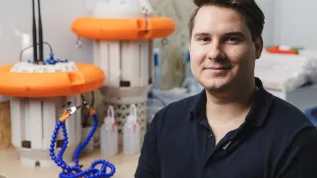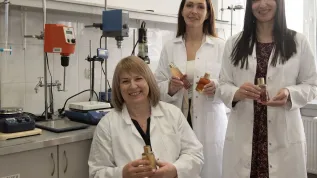
Polish company Neuro Device develops a system that enables the rehabilitation of people who have lost the ability to speak. The method based on neurostimulation will help speed up the recovery process of people with aphasia, even during home therapy.
Aphasia is a disorder involving the loss of the ability to use language, both in speech and in writing. The main cause of aphasia is brain damage, which can be a result of stroke, head trauma or brain tumour surgery, during which the structures responsible for speech have to be removed.
According to the American National Institute on Deafness and Other Communication Disorders (NIDCD), currently about 1 in 250 people in the world lives with aphasia. It affects about 5 million people every year. About a quarter of them are people under 40.
Standard treatment of aphasia are sessions with a speech therapist, neurologopedist or neuropsychologist. This therapy works if there are at least five therapy sessions a week. "The cost of this number of treatments burdens the patient, which often makes it a barrier. In addition, healthcare systems in the world suffer from the lack of specialists and therapists specialising in aphasia" - says Paweł Soluch from Neuro Device, who works on a new speech disorder therapy system.
Currently, people suffering from aphasia also have computer systems at their disposal to assist in their recovery. Tasks that the patient must complete appear on the computer screen. However, these systems are not personalised, which makes it difficult to conduct effective treatment. The third form is alternative communication, for example through gestures or applications that allow the use of symbols. "This form is convenient, but extremely limited, and condemns the patient to never achieving speech recovery" - says Soluch.
Studies show that brain stimulation improves the effectiveness of aphasia treatment by more than 30-50 percent (depending on the type of aphasia). Scientists from Neuro Device are among the teams working on a system that uses neurostimulation. Their system will consist of a head cap and a special software. The device will regularly send electrical impulses between the electrodes placed on the head. The patient will have to perform certain tasks during this stimulation.
"Our brains use electrical impulses that flow from the individual regions of the brain to other regions, communicating cognitive processes. When we have a stroke or another type of brain damage, the path of these electrical impulse passes is interrupted, or the centre that sends an impulse responsible, for example, for speech, is damaged" - describes the researcher. "We want to use an external electrical source to stimulate the damaged area and the impulse pathways so that they start functioning again. For the treatment to be effective, we need to combine brain reactions with a specific function, only then the brain will learn" - he explains.
This means that while electrical impulses are being sent, a patient with aphasia will have to practice the articulatory appartus, for example by repeating the words: mum, dad. Later the patient will practice multi-syllable words, sentences, reading and writing. With less severe aphasia, the patient will, for example, receive a sentence that lacks a word and needs to be completed.
Transcranial stimulation can be used regardless of age. But Soluch explains that because it is a new method, it is not yet known how pregnant women and people with epilepsy will react to it.
The co-author of the system also notes that the method is a supplementary treatment. Although patients do the exercises themselves while working with the software, the therapist will program the stimulator. The system can be used by patients at home and by therapists during treatment.
"Scientific studies show that this kind of stimulation can triple the rate of recovery of lost functions. But there are different types of aphasia, patients` condition varies. For now, we are sure that the method accelerates recovery, but we will be able to reliably speak about the rate of this acceleration in 1-2 years" - emphasises Soluch.
He admits that many teams are working on solutions similar to Neuro Device. "The team that gets there first will achieve the greatest success. Luckily our project is most advanced" - he notes.
Scientists from University College London, Goldsmiths, University of London worked on the system together with Paweł Soluch`s team, they were also joined by specialists from Oxford. At the end of April the device will be tested at Oxford University. The project is also supported by scientists from the Medical University of Warsaw and therapists from the Institute of Psychiatry and Neurology in Warsaw.
"Our device has been in existence for several months, but before we can market it, it must undergo clinical tests. All these centres will be invited to the clinical trial. We plan to complete this stage in 2018" - the researcher says. The device - according to preliminary estimates - will cost about 700 euros, but different forms of payment are being considered, for example micropayments, so that the users can pay for the actually used hours.
The authors of the device are currently participating in the international competition Chivas The Venture. Every year, the competition organisers invest 1 million dollars in projects that improve the quality of human life. Until April 25, Internet users can vote via their Facebook accounts for a specific project out of the 27 projects proposed by the organizers (bit.ly/eNDaphasia). The winner of the first place will receive 50,000 dollars. In total, a prize pool of USD 200,000 has been allocated for this stage of the competition. In the last stage (the world finals), which will end with a conference in Amsterdam, prizes from the USD 800,000 pool will be awarded.
PAP - Science in Poland, Ewelina Krajczyńska
ekr/ agt/ kap/
tr. RL













